Table Of Contents
- 1Introduction
- 2What is Automated Document Verification?
- 3What is Manual Document Verification?
- 4Manual vs Automated Verification: Key Differences
- 5Benefits of Automated Document Verification for Higher Education
- 6Challenges of Manual Verification in Admissions
- 7Future of Document Verification in Higher Education
- 8Summary
Introduction
Document verification is a cornerstone of university admissions, ensuring the authenticity of transcripts, degrees, and identity documents. Traditionally, manual verification has been the norm, but it is slow, error-prone, and resource-intensive. Research shows that over 30% of manually handled student documents face errors or delays, leading to missed deadlines and applicant frustration. With rising application volumes—U.S. universities processed over 4 million international student applications in 2023—manual checks are no longer sustainable.
Automated document verification leverages AI, OCR, and blockchain to validate credentials quickly and securely. For instance, the University of Melbourne automated 22 admission workflows, saving 10,000 labour hours annually and improving. Similarly, Bangladesh’s ShikkhaChain blockchain initiative enables instant academic credential verification, reducing fraud and boosting trust.
By shifting from manual to automated systems, universities cut costs, speed up enrollment decisions, enhance integrity, and deliver a smoother student experience in an increasingly competitive higher-ed landscape.
What is Automated Document Verification?
Automated document verification is a technology-driven process that uses artificial intelligence (AI), optical character recognition (OCR), machine learning, and blockchain to authenticate documents such as academic transcripts, ID proofs, and certificates. Unlike manual verification, which is time-consuming and error-prone, automation ensures faster, more accurate, and scalable validation. It checks for forgery, inconsistencies, and tampering while cross-referencing data with trusted databases. In higher education, it enables universities to process thousands of applications efficiently, improve compliance, and enhance trust in admissions decisions. By reducing workload, costs, and delays, automated verification significantly improves both institutional efficiency and the student experience.
What is Manual Document Verification?
Manual document verification is the traditional process where university staff physically examine and validate documents such as transcripts, certificates, and identity proofs submitted by applicants. This involves cross-checking details with issuing institutions, inspecting seals, stamps, and signatures, and ensuring documents meet admission requirements. While it allows for human judgment in detecting anomalies, the process is time-consuming, labour-intensive, and prone to human error. With rising application volumes, manual verification often leads to delays, misplaced files, and inconsistencies. Despite these challenges, many universities still rely on it due to familiarity, lack of resources, or concerns about adopting digital alternatives.
Manual vs Automated Verification: Key Differences
Manual document verification relies on human review of academic records and identity proofs, while automated verification uses AI, OCR, and digital tools. Understanding their differences helps universities improve efficiency, accuracy, and scalability in admissions and compliance processes.
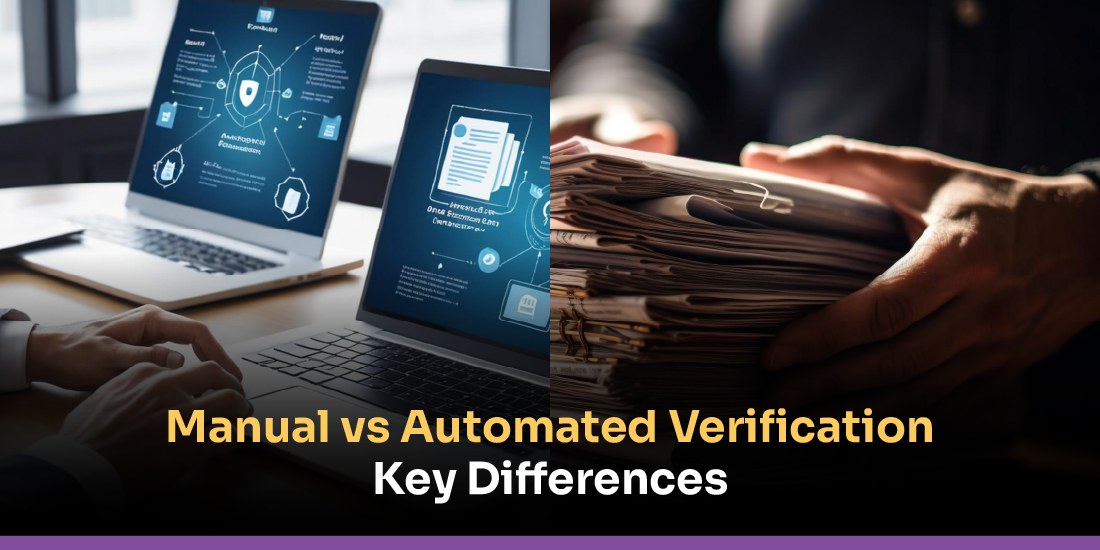
| Aspect | Manual Verification | Automated Verification |
| Process | Human staff physically review and validate documents | AI, OCR, and ML validate documents digitally |
| Speed | Slow; can take days or weeks | Fast; often completed in minutes |
| Accuracy | Prone to human error, oversight, and fatigue | High accuracy with fraud detection algorithms |
| Scalability | Limited by staff capacity | Easily scalable to thousands of applications |
| Cost | High labour and administrative expenses | Reduces operational costs over time |
| Fraud Detection | Relies on staff experience and judgment | Uses advanced tools to detect tampering/forgery |
| Student Experience | Longer wait times and delays | Faster admissions decisions and transparency |
Benefits of Automated Document Verification for Higher Education
Automated document verification empowers universities to process applications with greater accuracy, speed, and security. By leveraging AI, OCR, and blockchain, institutions can reduce fraud, cut costs, and scale verification efficiently—creating a seamless, transparent, and student-friendly admissions process that strengthens institutional credibility and competitiveness.
Faster Processing
Manual verification often takes weeks, especially when coordinating with external institutions. Automated systems validate documents in minutes by scanning, extracting, and cross-checking information. This speed accelerates admissions cycles and ensures students receive timely decisions.
Higher Accuracy
Human verification is prone to fatigue and oversight. Automation, powered by AI and OCR, minimizes errors in data extraction and matching. This ensures universities make decisions based on authentic and accurate information.
Fraud Prevention
Fake transcripts, tampered certificates, and identity fraud are growing risks. Automated systems use advanced fraud-detection algorithms, digital watermark recognition, and blockchain-backed verification to identify forgery and maintain institutional integrity.
Scalability
As applications increase—especially international ones—manual processes struggle to cope. Automated verification can process thousands of documents simultaneously, allowing universities to handle peak admissions seasons without staff burnout.
Cost Efficiency
Automation reduces dependency on large verification teams, cutting administrative and labour costs. Over time, it lowers operational expenses and frees staff to focus on higher-value tasks like student support.
Compliance
Universities must follow strict government and accreditation standards. Automated tools generate digital trails, audit logs, and compliance reports, ensuring institutions meet regulatory requirements while reducing legal risks.
Improved Student Experience
Delays and errors frustrate applicants. Automation provides quicker, transparent updates, boosting student trust and satisfaction. A smooth verification process also enhances the university’s reputation in competitive global markets.
Challenges of Manual Verification in Admissions
Manual verification in admissions is slow, error-prone, and resource-heavy. With rising application volumes, universities struggle to ensure accuracy, efficiency, and fairness using purely human-driven processes.
Time-Consuming
Manual verification often requires staff to physically review each document, contact issuing institutions, and confirm authenticity. This process can take weeks, creating bottlenecks and delaying admission decisions for thousands of applicants.
Human Error
Admissions officers reviewing large volumes of applications are prone to fatigue. Small mistakes—like misreading dates, overlooking forged stamps, or mismatching records—can lead to unfair rejections or approvals.
Scalability Issues
During peak admissions, universities may receive tens of thousands of applications. Limited staff capacity makes it difficult to scale, resulting in backlogs, longer processing times, and inconsistent service.
High Costs
Employing large teams to handle verification drives up administrative expenses. Manual methods also require additional resources for storage, communication, and re-verification when errors occur.
Fraud Vulnerability
Fake transcripts and forged certificates are increasingly sophisticated. Without advanced digital tools, manual verification often struggles to detect such fraud, jeopardizing institutional credibility.
Inconsistency
Manual checks rely heavily on individual staff judgment. Two officers may interpret the same document differently, leading to inconsistent outcomes and undermining fairness.
Student Dissatisfaction
Applicants expect quick and transparent updates. Long waiting periods, errors, and uncertainty cause frustration, reduce trust in the institution, and may push students to choose competitor universities with faster processes.
Future of Document Verification in Higher Education
As universities embrace digital transformation, document verification is evolving rapidly. Traditional manual methods are being replaced by AI-powered, blockchain-based, and cloud-driven systems that enhance speed, accuracy, and trust. The future lies in secure, scalable, and student-friendly verification that supports global mobility and academic integrity.
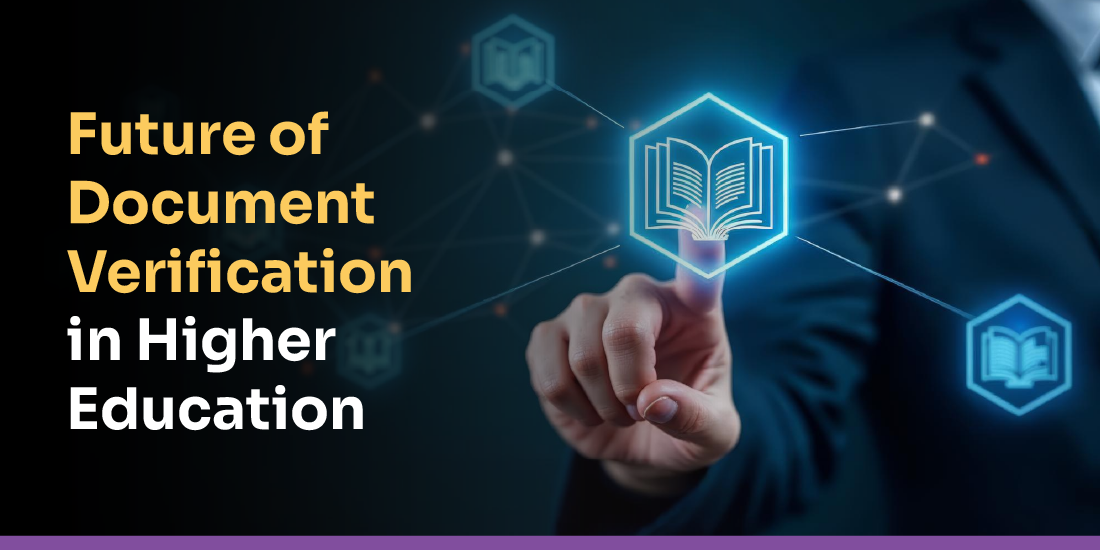
AI & Machine Learning
Artificial intelligence will power advanced verification tools capable of reading complex academic records, detecting anomalies, and identifying forged or altered documents instantly. These systems will continuously learn from data, improving accuracy over time and reducing human oversight.
Blockchain Credentials
Blockchain will enable tamper-proof, verifiable digital diplomas and transcripts. Institutions like MIT and the University of Melbourne already pilot blockchain-based diplomas, allowing students to share secure academic credentials globally within seconds.
Biometric Integration
Future systems will link document verification with biometric authentication, such as facial recognition or fingerprint scans. This ensures that the verified academic record truly belongs to the applicant, eliminating identity fraud.
Cloud-Based Systems
Cloud-driven platforms will centralise document storage and verification. Universities worldwide can access, validate, and share student records securely, enabling faster collaboration and simplifying international admissions.
Interoperability Standards
Global networks like Digitary, WES, and the Europass framework are building ecosystems where institutions can seamlessly exchange verified credentials. Standardisation ensures smoother student mobility across borders.
Student-Centric Portals
Next-gen systems will prioritise transparency. Students will have access to self-service dashboards to upload documents, track verification progress, and receive instant updates—improving trust and user experience.
Regulatory Alignment
As data privacy laws tighten, verification platforms will integrate compliance with GDPR (Europe), FERPA (U.S.), and other frameworks. This alignment protects student data while maintaining global trust in credential verification.
Summary
Document verification is vital for university admissions, but traditional manual methods are slow, error-prone, and costly. With application volumes rising—over 4 million in the U.S. alone in 2023—manual checks often cause delays, inconsistencies, and student dissatisfaction. Automated verification powered by AI, OCR, and blockchain offers faster processing, higher accuracy, fraud detection, scalability, and compliance. Universities like Melbourne have saved thousands of labour hours, while blockchain pilots such as ShikkhaChain enhance trust. The future points to AI, blockchain credentials, biometrics, cloud platforms, and global standards, ensuring secure, transparent, and student-friendly verification that strengthens institutional credibility worldwide.
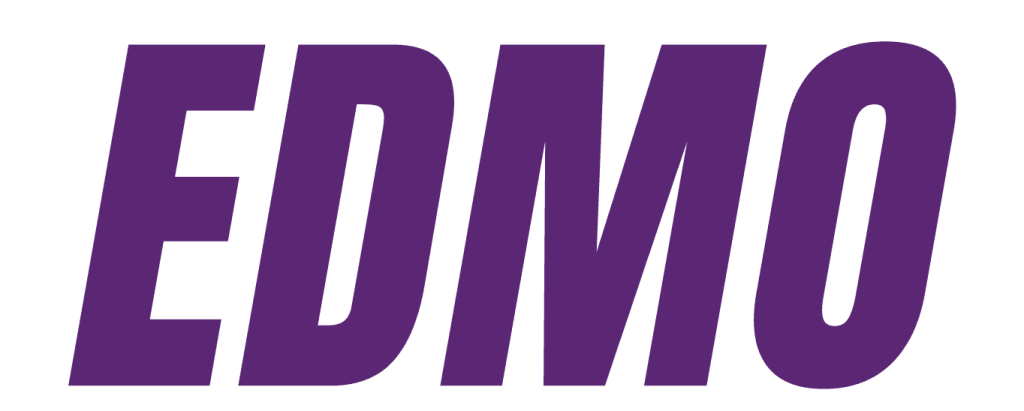
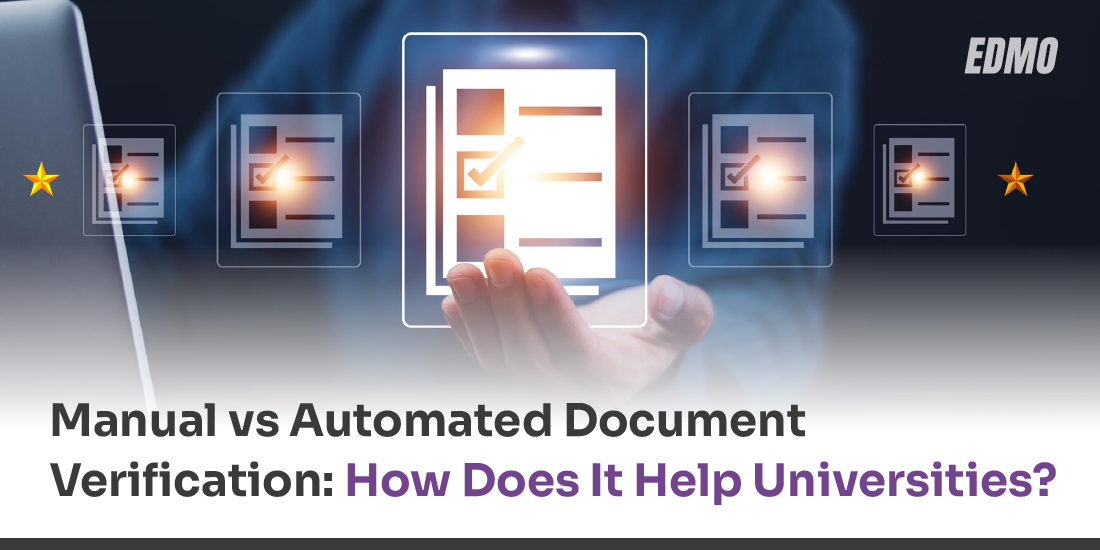
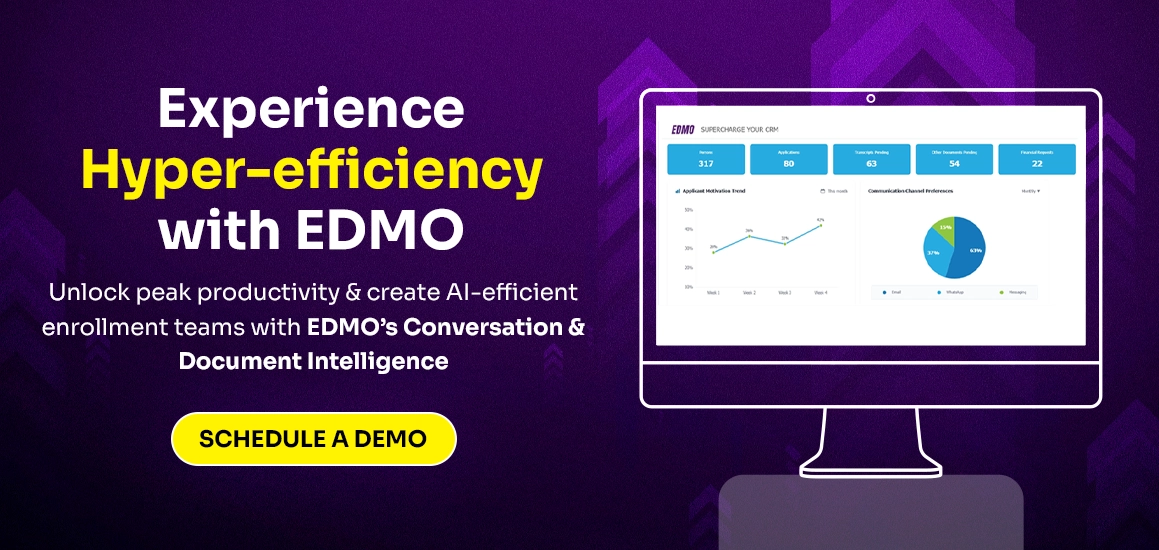


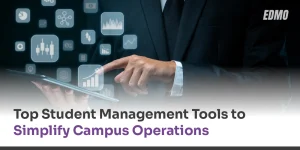


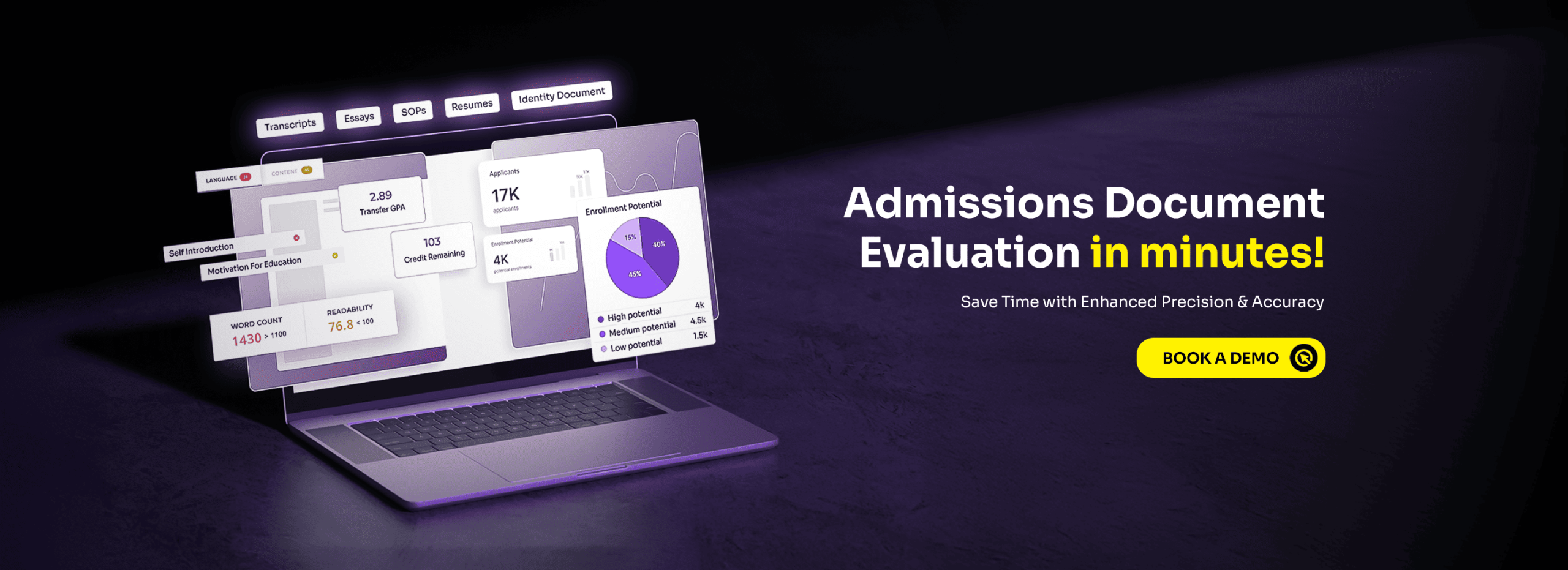
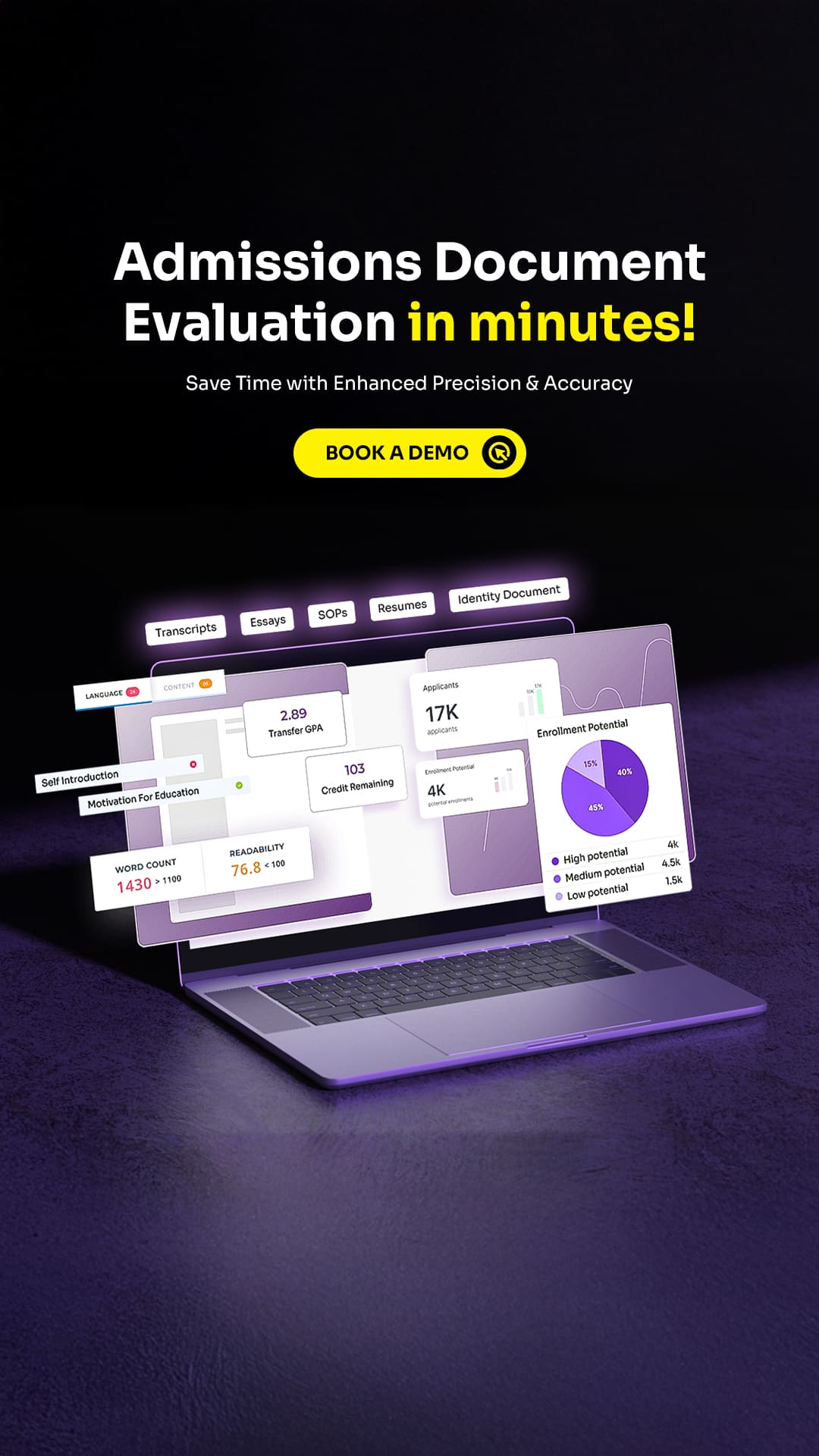
No comments yet. Be the first to comment!
Leave a Comment